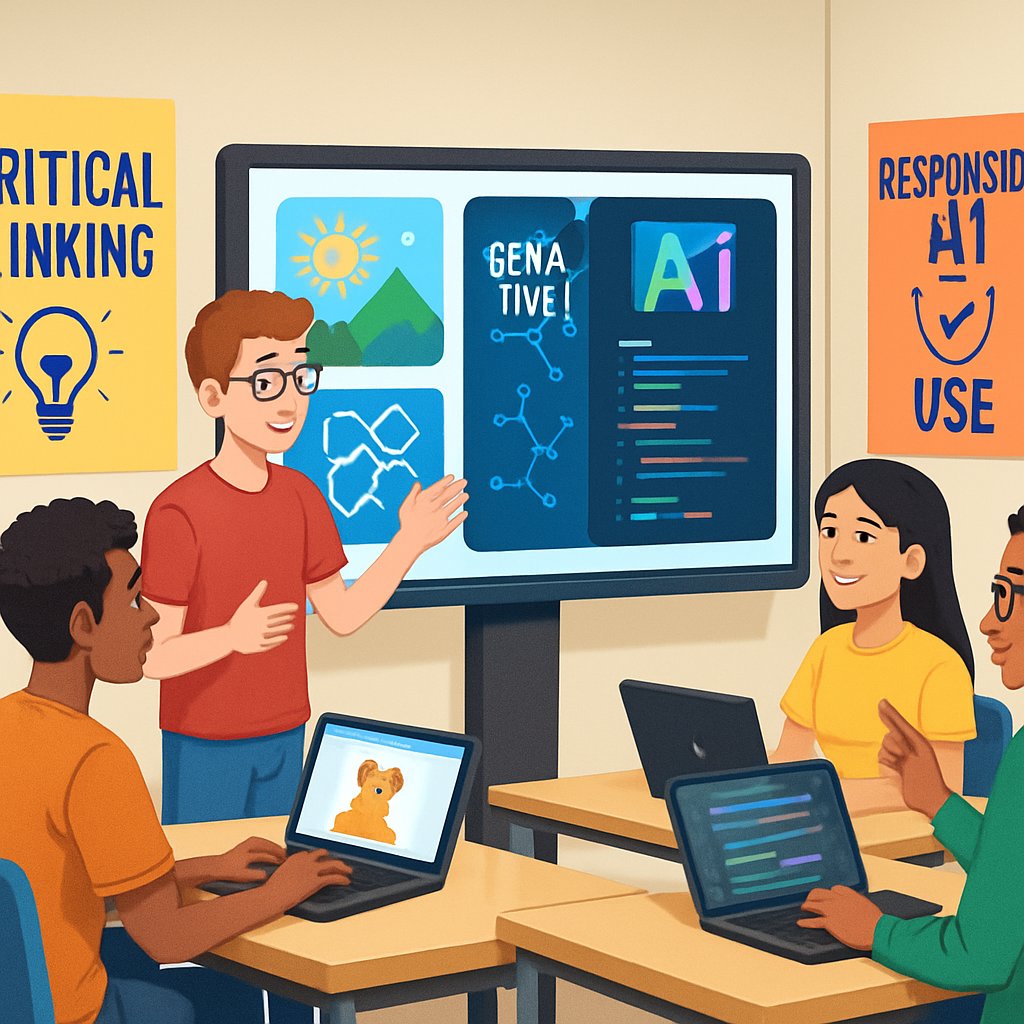Navigating the GenAI Wave: Teaching Software Engineering Responsibly
In today’s fast-paced digital landscape, the rise of Generative AI (GenAI) tools like ChatGPT and GitHub Copilot is reshaping software engineering education. While these tools offer immense potential to enhance learning, they also introduce significant challenges. A recent study by Vahid Garousi and colleagues takes a closer look at how educators can equip students to use GenAI responsibly, fostering critical thinking and skill development. This blog will break down their findings and impart practical insights on navigating the GenAI wave in educational settings.
Understanding the Landscape of GenAI in Education
The Promise and Peril of GenAI
Generative AI tools have transformed various industries, including education. They offer students personalized support, enabling easier access to learning resources and assistance with programming tasks. However, there’s a growing concern that students might misuse these tools—using them as shortcuts instead of helpful aids—which can hinder their learning and critical thinking skills.
Imagine you have a magic book that instantly gives you all the answers for your homework. It sounds great until you realize that you’re never really learning anything! The core of the study revolves around this very dilemma: how to strike a balance between using GenAI advancements while ensuring students actually develop the necessary skills.
A Causal Model for Responsible Use
To tackle these challenges, Garousi and his team developed a causal model designed to clarify how different influences affect students' use of GenAI tools. The model highlights the interplay between educators, students, and the characteristics of GenAI tools themselves and establishes intervention strategies.
The model is structured around these groups:
- Professors shape classroom environments through policies and assignments.
- Students' traits, motivations, and experiences impact how they engage with GenAI.
- GenAI tools present characteristics that influence trust and usability.
By understanding the relationships among these groups, educators can create effective strategies to promote responsible GenAI use, ultimately aligning learning outcomes with industry expectations.
Putting the Model to the Test: Two Real-World Applications
Case Study #1: Final-Year Software Testing Course
The researchers applied their causal model in a Software Testing course at Queen’s University Belfast. The goal was to redesign lab assignments to integrate GenAI responsibly while ensuring students still learned essential skills.
Key Changes Made:
- GenAI Usage Declarations: Students were required to declare if they used any GenAI tools and how they assisted in their work.
- Validation Tasks: Students critiqued AI-generated outputs, such as test cases and bug reports, ensuring active engagement with the material.
- Career-Relevant Messaging: Assignments included reminders that real-world employers expect graduates to reason through their work, not just accept automated outputs.
These revisions aimed to transition students from passive consumers of GenAI tools to active critics, equipped to discern quality and validate the information.
Case Study #2: Azerbaijan Technical University's BSc Curriculum Design
In a groundbreaking initiative, Azerbaijan Technical University sought to launch its first standalone Bachelor’s program in Software Engineering. The same causal model guided the integration of GenAI competencies throughout the entire curriculum rather than relegating it to a single course or ethics discussion.
Key Features:
- Longitudinal Scaffolding: Courses from introduction to advanced levels built upon each other, gradually increasing expectations for students’ understanding of GenAI tools.
- Interdisciplinary Alignment: Learning outcomes related to GenAI were incorporated across various modules, reinforcing ethical use, validation practices, and the importance of critical engagement.
Such an all-encompassing framework not only prepares students today but shapes how future engineers interact with technology.
Practical Implications and Real-World Applications
Building AI Literacy
One of the emerging themes from the research is the need for AI literacy among students. Just as students learn the foundational principles of software engineering, they should also learn how to use GenAI tools thoughtfully.
Practical Tips for Educators:
- Integrate Guidelines: Clearly outline acceptable uses of GenAI in assignment prompts.
- Foster Critical Engagement: Encourage students to regularly critique AI outputs and involve peer reviews in assignments.
- Communicate Career Relevance: Regularly emphasize how responsible GenAI use impacts long-term career success.
Promoting Reflection and Validation
To ensure students engage with GenAI tools in a meaningful way, educators could implement reflection-based prompts. For instance:
- Ask students about their GenAI use: "What did you rely on GenAI for in your last project? How did you verify its accuracy?"
- Encourage peer conversations: Promote discussions about the strengths and weaknesses of AI tools within student groups.
Using such tactics can help students internalize the importance of critical evaluation over blind reliance.
Key Takeaways
- Balance is Essential: As GenAI tools become commonplace, educators must guide their use to ensure students retain critical thinking and responsible practices.
- Causal Model as a Framework: The proposed model offers a structured approach to designing interventions that foster responsible GenAI usage.
- Embedding AI Literacy: Incorporating AI-related competencies into educational programs continuously prepares students for real-world challenges.
- Encouraging Validation: Promoting the reflection on AI outputs fosters an environment of critical inquiry rather than passive consumption.
In conclusion, while generative AI holds the power to transform educational methodologies, it brings with it a set of responsibilities. By adopting models and strategies emphasized in Garousi's research, educators can cultivate a generation of software engineers who are not just tech-savvy but also critically engaged with the tools they use.
Ready to Re-evaluate Your Use of AI Tools?
If you're an educator looking to enhance your curriculum or a student wanting to maximize your learning experience, consider taking a step back. Explore how you engage with GenAI—challenge yourself to think critically and validate what technology offers. The future of software engineering is at your fingertips, and with it, the responsibility to use it wisely!

